Tiger Point Lonavala stands as one of the crown jewels, a dramatic cliff-edge viewpoint that transforms the Western Ghats into a living postcard.
Perched 12 kilometres from Lonavala Station, this spectacular vantage point offers sweeping panoramic views that shift with the seasons, from monsoon-draped emerald valleys to winter’s crisp, cloud-kissed horizons.
What sets Tiger Point apart from other hill station viewpoints is its year-round appeal and remarkable accessibility. Whether you’re chasing the golden hour at sunrise, watching storm clouds roll across the Sahyadri Mountains, or simply seeking that perfect Instagram shot, the viewpoint delivers consistently breathtaking vistas that justify every travel itinerary.

Tiger Point is a dramatic cliff-edge viewpoint located in the Sahyadri mountain range, approximately 12 kilometres from Lonavala Station in Maharashtra. Named for its resemblance to a tiger’s leap when viewed from certain angles, this scenic overlook has become one of the Western Ghats’ most photographed destinations.
The viewpoint sits at an elevation that offers unobstructed panoramic views across the Lonavala-Khandala valley, making it a natural amphitheatre for sunrise and sunset experiences.
However, there are no tigers in Tiger Point Lonavala, just to clear a common misunderstanding.
| Entry Fee | Free |
| Opening Time | Visit after 6 AM for a lovely sunrise view |
| Closing Time | Stay until 7 – 7:15 PM to enjoy sunset view |
| Best Time to Visit | 6:30 AM to 9:00 AM / 5:30 PM to 7:15 PM |
Originally a quiet spot known mainly to locals and serious hikers, Tiger Point has evolved into a must-visit destination for weekend getaways from Mumbai and Pune.
The viewpoint gained popularity through social media and word-of-mouth, transforming from a hidden gem into one of Lonavala’s signature attractions.
Unlike many remote mountain viewpoints that require strenuous treks, Tiger Point offers relatively easy accessibility while maintaining its wild, untouched character.
The combination of dramatic landscapes, convenient access, and year-round scenic beauty has cemented its position as a cornerstone of any Lonavala itinerary.
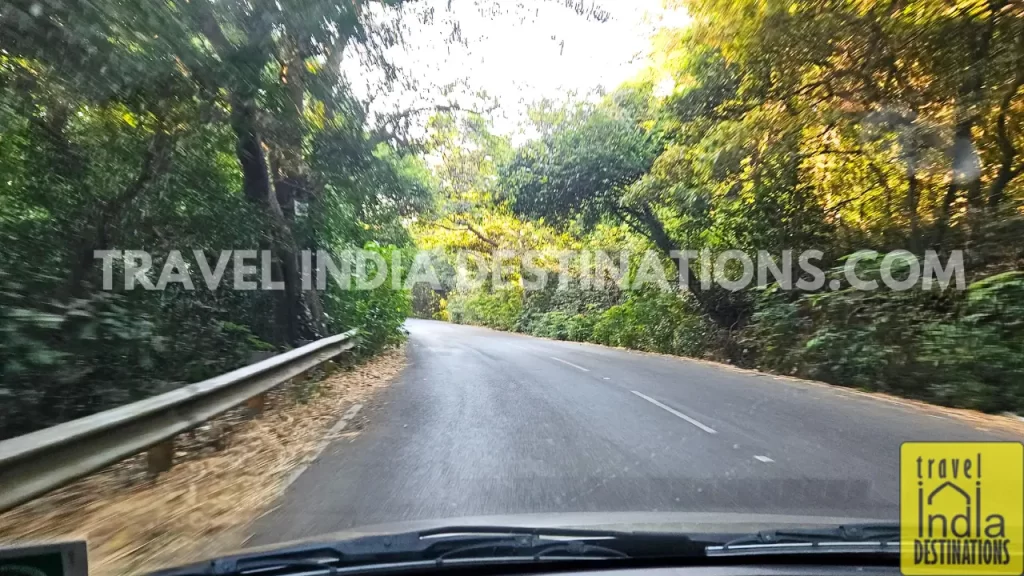
Tiger Point is located about 12 km from Lonavala Railway Station and is easily accessible by road. The drive takes around 30 minutes, with most of the route along the INS Shivaji Road. The road is well-paved and scenic, offering beautiful views of the Western Ghats as you ascend.
However, do drive or ride cautiously as the road is narrow with several turns and curves, especially as you near the viewpoint.
It’s best to start early in the morning to avoid traffic and enjoy a more peaceful experience. During the monsoon, be extra careful as the road can get slippery.
You can hire an auto-rickshaw outside the railway station, in case you aren’t using a private vehicle. However, make sure that you decide and agree on the fare before you get into it to avoid any misunderstanding later.
What’s the Bhushi Dam to Tiger Point Distance?
Tiger Point is located about 6.2 km from Bhushi Dam and is easily accessible by road. The drive takes around 15–20 minutes. If you are planning a trip to Bhushi Dam, you may cover Tiger’s Point on the same day. It is one of the best places to visit near Tiger Point Lonavala.
How to Enjoy Bhushi Dam & Tiger Point The Same Day?
If you are planning a morning trip, I would recommend heading to Tiger Point Lonavala first to experience the sunrise, and then on return, you can spend time at Bhushi Dam. However, if you are planning an afternoon-evening trip, you may explore Bhushi Dam during early evening hours and visit Tiger Point by sunset.
People often ask which is better, Tiger Point or Lion Point in Lonavala; however, the fact is that Tiger Point and Lion Point are just a few hundred metres (5 to 10 minutes) apart and offer the same panoramic views. They are essentially two spots along the same ridge, so you get a similar experience at both.
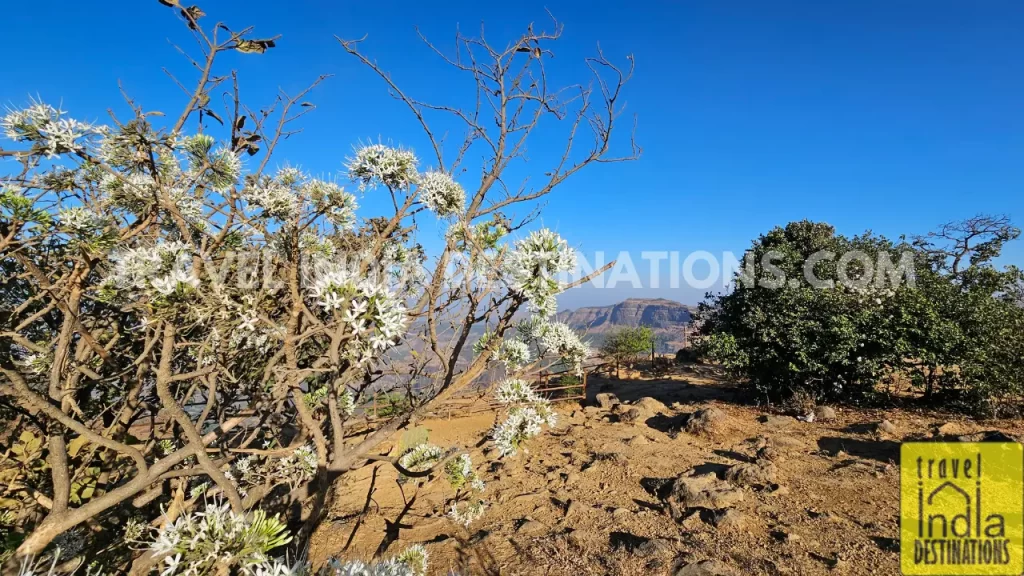
Tiger Point delivers spectacular views year-round, but timing can dramatically enhance or ruin your experience. As per my experience, the best time to visit Tiger Point Lonavala is in October. This is when the monsoon is over, and the lush green landscape with relatively clear skies makes for a lovely experience.
Having said that, a lot also depends on what kind of experience you prefer.
Early morning hours (6 to 9 AM) provide the quietest atmosphere with fewer crowds and stunning sunrise views, while late afternoon (5 to 7 PM) offers golden hour magic perfect for sunset photography, but there will be more people around.
If you are interested in clear skies and excellent visibility allowing you to scan the panoramic views, the summer (March to June) months are ideal for it. With no mist and monsoon clouds hovering above, you can capture some amazing wide-angle shots and selfies.
Lonavala Tiger Point in the rainy season (July to September) transforms into a verdant paradise with cascading waterfalls and mist-covered valleys. However, visibility will be limited during these months due to heavy rainfall.
Post-monsoon months (October to February) offer a combination of clear skies and the most comfortable weather, making this the ideal time for photography and leisurely visits.
Timing is Everything: Tiger’s Point is known for its sunrise and sunset experiences, and therefore, you want to make sure you don’t miss the moment. Plan your itinerary accordingly to ensure you are here on or before the time to enjoy the experience.
Weather Considerations: Tiger Point Lonavala in monsoon offers a unique experience, but before heading out, keep track of the traffic situation and weather conditions. Winter mornings can be surprisingly chilly, so carry a light jacket. Avoid visiting during heavy rainfall as paths can become slippery.
Facilities and Preparation: Tiger Point is a natural viewpoint with minimal infrastructure. Hence, there are no restroom/toilet facilities available at the location. Plan accordingly and use facilities at your hotel or accommodation before heading out, especially with women and children.
Carry Essentials: Always carry a small backpack that includes a water bottle, wet tissues, and a portable phone charger if you are going to click plenty of Instagram-worthy shots and selfies.
Enjoy Taking Pictures Responsibly: Various viewpoints offer multiple angles for taking Tiger Point Lonavala photos. You may walk along the cliff edge (safely behind barriers) to find different perspectives and light angles. The valley views are particularly striking with wide-angle shots, while telephoto lenses capture distant mountain ranges beautifully.

Safety First: Stay behind safety barriers and keep children close; the cliff drops are significant. Be cautious during the monsoon season when surfaces can be wet and slippery. The viewpoint has basic safety infrastructure, but personal caution is essential.
Avoid Wearing Flip-Flops: Tiger Point is not an ideal place to explore in flip-flops, mainly because during the monsoon season, the surface can be wet and slippery. Also, you’ll find ample broken beer bottle shards that can injure you or your loved ones accidentally.
Our Tiger Point Experience: Beauty and Reality
This year, we decided to visit Tiger Point Lonavala early morning for a lovely sunrise experience. It was a nice, quiet Saturday in March. While not the ideal time to explore Tiger Point, we still had a great time.
The landscape was missing its usual greenery, but the clear summer weather gave us wider and clearer views. The morning was cooler than we had anticipated, making it perfect for a peaceful experience.
Sarah and I took a few moments to soak in the lovely views, pausing to appreciate the stillness. We stopped talking, simply taking in the vastness ahead of us, our eyes stretching as far as we could see.
However, as we began to explore different areas of Tiger Point in Lonavala, we discovered something that changed our perspective on this beautiful place.
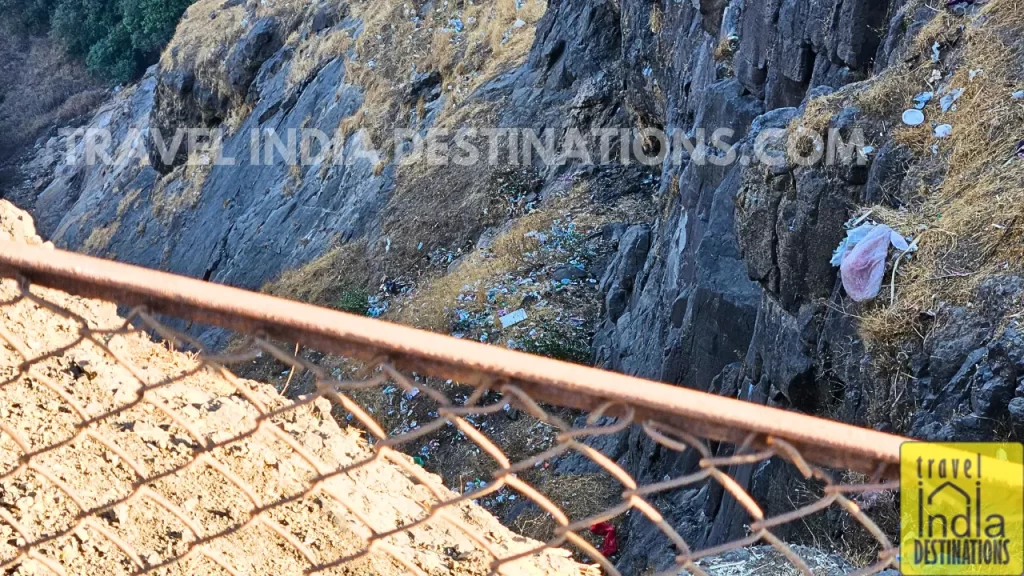
The Reality Behind the Views
Litter, bole toh – kachra
Scattered across this stunning landscape, we found plastic bottles, food wrappers, and broken glass hidden among the rocks and vegetation. It’s become an unconscious habit for many of us to treat these spaces casually without realising the lasting impact on the environment and other visitors.
When weekend travellers leave waste at viewpoints, waterfalls, and hillsides, these beautiful destinations slowly lose their natural charm. What’s concerning is how normalised this has become; we walk past litter without really seeing it anymore.
We noticed similar issues during our visits to Bhushi Dam and our trek to Lohagad Fort. Each of these incredible locations showed signs of the same challenge: stunning natural beauty competing with human negligence.
The issue extends beyond individual visitors. Some local vendors, when their dustbins overflow, dispose of waste by tipping it over the cliff edges. Out of sight, but the impact remains very real for the ecosystem below.
Then there are the monkeys, who occasionally appear to grab food from visitors. This creates an even bigger mess as they scatter packaging and leftovers throughout the valley. What we share with them, whether intentionally or not, often ends up as debris that mars the landscape.
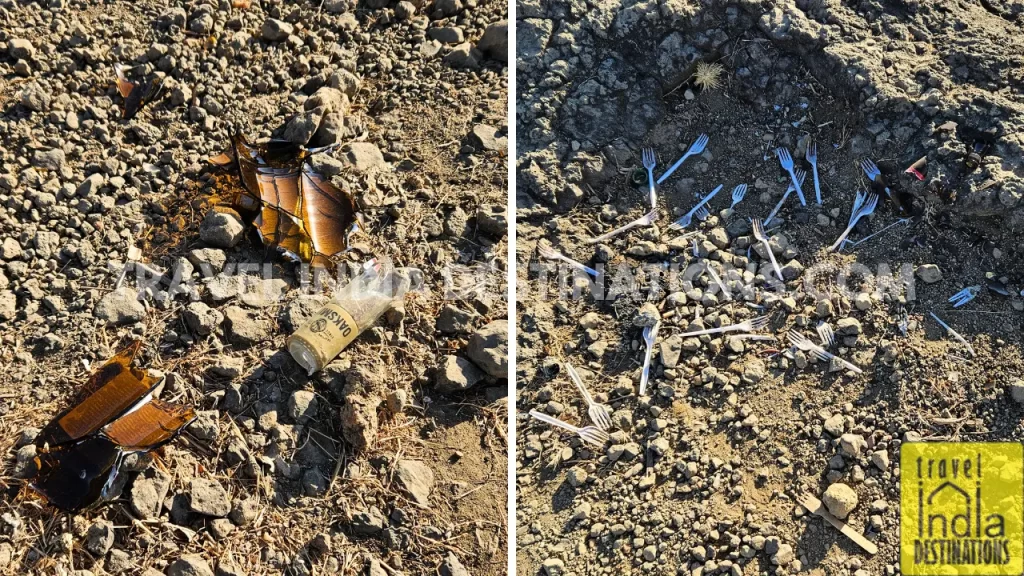
The litter creates real safety concerns, too. Broken glass bottles, sharp plastic edges, and metal fragments can seriously injure anyone exploring the area. Picture a child or someone you care about stepping on hidden broken glass while enjoying what should be a peaceful experience.
These hidden dangers create a stark contrast to the serene environment that Tiger Point promises. What should be purely about natural beauty and relaxation becomes complicated by avoidable hazards.
This challenge isn’t unique to Tiger Point; popular tourist destinations across India face similar struggles. The pattern repeats: people come for the beauty, enjoy the experience, but leave behind traces that diminish the place for future visitors.
It’s particularly disappointing because places like Tiger Point have incredible potential to showcase how we can enjoy nature responsibly. This remains one of Lonavala’s most spectacular viewpoints, offering year-round beauty and memorable experiences. The landscape deserves visitors who appreciate both its majesty and its vulnerability.
In an era when conscious travel is growing, seeing this kind of environmental impact feels especially disheartening. Every piece of abandoned waste serves as a reminder that enjoying natural beauty comes with the responsibility to protect it.
Tiger Point gave us a morning we’ll always treasure, the peace, the golden light, the endless horizon stretching into the Western Ghats. It’s exactly why people make the journey here.
But it also opened our eyes to what happens when that privilege gets taken for granted.
While systems and infrastructure need improvement, the most immediate change happens through individual choices as visitors. Moving past the casual “sab chalta hain” approach requires each of us to think differently about how we interact with these spaces.

When you visit Tiger Point, soak in those incredible views, breathe the clean mountain air, enjoy some corn bhajjis and capture those perfect photos.
But consider carrying back everything you brought, including your trash, your wrappers, and your plastic bottles.
Small actions like respecting safety barriers and leaving natural elements undisturbed help preserve the magic for everyone who follows.
Because maintaining these beautiful places isn’t just someone else’s responsibility, it becomes meaningful when we each play our part.
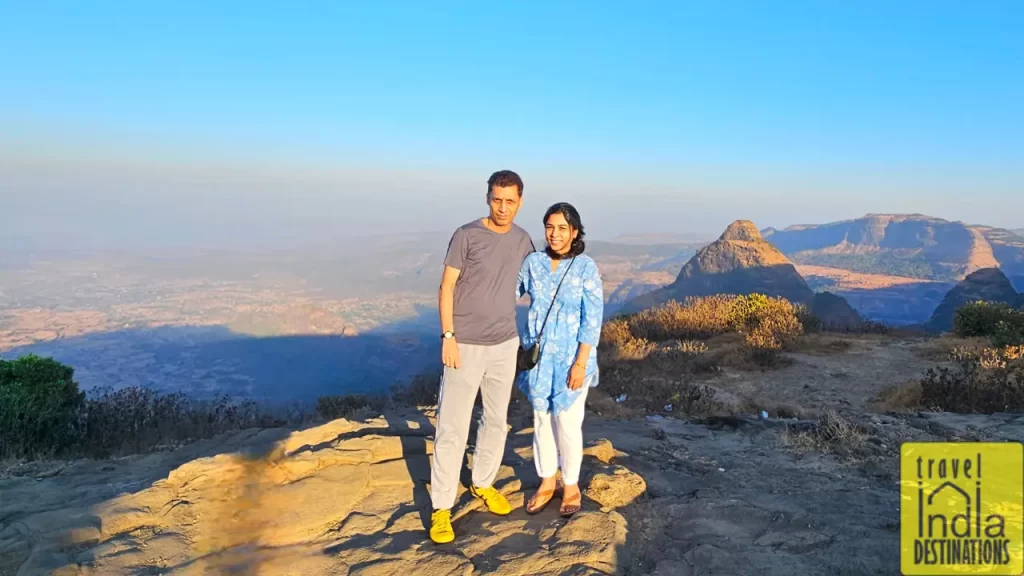
Beyond Tourism: A Personal Connection
This might not read like your typical travel guide. You won’t find a detailed itinerary or hidden gems list here. Instead, consider this a reflection on mindful travel, whether you’re exploring Lonavala, Khandala, Mahabaleshwar, or any destination that welcomes visitors into its natural spaces.
This perspective isn’t meant to criticise Lonavala, which remains a wonderful destination and my second home. My relatives live here, and I’ve been visiting since childhood, watching it evolve and welcome countless travellers over the decades. The town deserves thoughtful visitors who appreciate its offerings.
Tiger Point represents more than just another scenic overlook. It’s a microcosm of what we stand to lose when we disconnect from our impact on public spaces. We went seeking tranquillity and found it, but we also encountered a reality that felt impossible to ignore.
The solution doesn’t require waiting for policy changes or infrastructure upgrades. Whether you’re a resident, weekend adventurer, or passing traveller, individual actions create collective impact. Respecting these spaces and leaving no trace helps ensure they remain spectacular for future generations.
Respect the Space, Leave No Trace, because these places won’t stay beautiful unless we help keep them that way.
Frequently Asked Questions
Tiger Point is famous for its stunning views of the Western Ghats, especially during sunrise and sunset. The cliffside location offers panoramic vistas, cool breeze, and a peaceful atmosphere that draws both tourists and locals alike.
There is practically no difference between the two. Tiger Point and Lion Point are just a few hundred metres apart and offer the same panoramic views. They are essentially two spots along the same ridge, so you get a similar experience at both.
No, visiting Tiger Point is completely free. There is no official entry fee or ticket.
The best time is early morning for sunrise or late evening for sunset. Monsoon season adds to the charm with lush greenery and mist. The best month to visit Tiger Point is October.
Yes, it is safe but visitors should be careful near the cliff edges and watch out for monkeys who often snatch food items. Also, look out for broken glass bottles that can injure your foot unknowingly.
Due to a rise in incidents involving tourists falling prey to antisocial elements, the Lonavala police have urged visitors to avoid Tiger Point between 7 PM and 7 AM. The move is meant to ensure visitor safety. Shops and food stalls in the area have also been instructed not to operate beyond designated hours, and strict action may be taken against those who violate these rules.
Yes, you’ll find local vendors selling tea, corn, vada pav, and other snacks. Most stalls are active during the day and especially on weekends. Please make sure that you throw paper cups and plastic forks and spoons in a dustbin to keep the place clean and litter-free.
Yes, while there is no designated parking lot, there’s ample space along the roadside where people usually park without issues.
6 comments
I agree to what you have mentioned about littering and dumping garbage,very well said about the problems on tourists sights
Thank you, Habib. I appreciate your comment and your stand against littering.
“Respect the space. Leave no trace. Because these places won’t stay beautiful unless we help keep them that way.”
Great advice
Thank you Dan for your comment. I think that’s the only advice I can give without being preachy.
What a shame about the litter. People have forgotten respect of so many types.
Thanks for the photo of you and Sarah — it’s splendid. Hugs to you both.
Thank you, Teagan. Hugs from both of us.